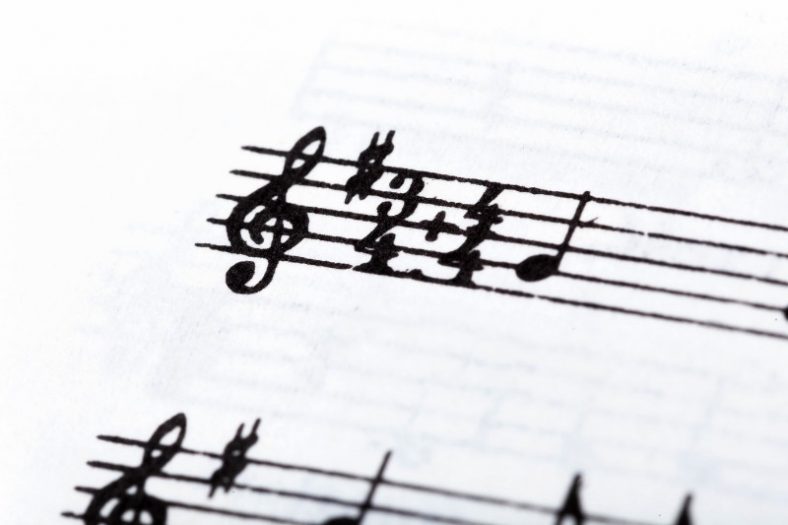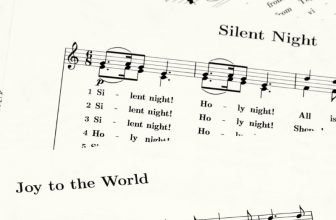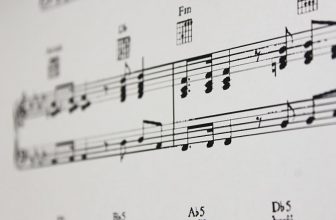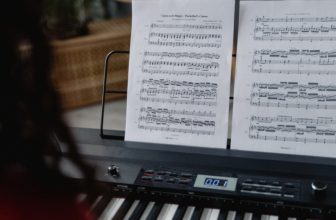The Difference Between 4/4 and 3/4 Time Signatures

A 4/4 time signature has four quarter-note beats per measure, whereas a 3/4 time signature has three quarter-note beats per measure. Even though 4/4 is by far the most common time signature there is, 3/4 is used extensively in genres such as classical music (especially waltzes), country, or R&B.
Both time signatures can be divided into groups of eighth-note beats, which is quite convenient for counting their rhythm. To count a 4/4 measure, all you have to do is sing “1 and 2 and 3 and 4 and” in regular intervals. The pattern “1 and 2 and 3 and” applies to all measures of 3/4.
Time signatures have a fundamental impact on the overall feel of a musical composition. This happens because they dictate where the accent of the rhythm is. In music, an accent is an emphasis placed on a given quarter-note beat. A basic 4/4 rock drum pattern, for instance, places a strong emphasis on beat 3.
Time signatures do not influence how fast a song is.
Contents
Why are 4/4 and 3/4 time signatures different?
A 4/4 time signature and a 3/4 time signature are different because they have different accents. In a 4/4 beat, beats 1 and 3 are the strongest beats and are most commonly represented, respectively, by a kick and snare drum. In a 3/4 beat, the accent is on beat 1.
A creative drummer can easily approach the traditional accents of any time signature in any way he or she desires. But the time signature of a musical composition unavoidably suggests one or more natural points of emphasis, i.e., beats that feel like they should be stronger than others.
In this respect, we can say that 4/4 and 3/4 beats feel more different than, for instance, 4/4 and 2/4 beats do. If you line up four measures of a 4/4 drum loop with eight measures of a 2/4 drum loop, the accents will most likely hit the same spots. But if you try to do the same using a 4/4 drum loop and a 3/4 drum loop, pretty much all the accents will end up in different places.
In terms of feel, what makes a 3/4 time signature so distinctively different from a 4/4 time signature is the two-quarter-note pause between accents. In 4/4 patterns, strong beats are separated by just one quarter-note. This quarter note is commonly known as the backbeat.
What is a 4/4 backbeat?
The backbeat is the name given to beats 2 and 4 of a 4/4 time signature, i.e., the beats that come in-between the more-emphasized beats 1 and 3.
In reggae music, it’s common for rhythm guitarists and keyboardists to play strong notes and chords in the backbeat. Reggae is for that reason a fine example of how emphasizing naturally weaker beats can have a huge impact on a song’s groove.
Finding the accented beats of complex time signatures
There are numerous time signatures out there, ranging from the two-quarter-beat simplicity of a 2/4 to the over-the-top flamboyance of a 256/32. And no, I’m not making that one up: it’s the actual time signature of the song Entertain Me, by the Armenian jazz pianist Tigran Hamasyan!
Complex time signatures such as the unusual 5/4 and 7/4 can be scary, but they’re ultimately made up of 2/4 and 3/4 combinations. Their accented beats are merely the 1’s of each division.
To find the accented beats of a 5/4 time signature, for instance, divide the measure’s five quarter-note beats into a section of three quarter-note beats and a section of two-quarter-note beats. In other words, put a 3/4 and a 2/4 measure together and emphasize beat 1 in both.
A quick guide for time signature accents
| Time signature | Accented beats | Common genres |
| 2/4 | 1 | Polkas and marches. |
| 3/4 | 1 | Classical music, country, and R&B. |
| 4/4 | 1, 3 | Pop-rock, EDM, jazz, and funk. |
| 5/4 | 1, 4 | Progressive rock and big band music. |
| 7/4 | 1, 4, 6 | Asian, middle-eastern, and Balkan folk music. |
Is a 3/4 time signature the same as a triplet?
Triplets and 3/4 time signatures are often mistaken, but they’re not the same thing. Whereas 3/4 is a time signature in which a song is divided into measures of three quarter-note beats, a triplet is a musical rhythmic approach in which three notes are played in the time of two quarter-notes.
Why is 4/4 the most common time signature?
The 4/4 time signature is considered to be stable, easy to play and work with, naturally responsive, and highly intuitive. It also appeals to our love for symmetry. However, many experts believe that tradition is the main reason why 4/4 is the most common time signature.
The theory is simple: we keep making music in 4/4 because we have been heavily exposed to music in 4/4 for generations. This is particularly true when you consider the history of Western music. The 4/4 time signature was already common in the days of Mozart but became the absolute, incontestable standard with the rise of pop-rock music.
This means that the reason why humans love 4/4 grooves is possibly not natural, but cultural. Some forms of non-western folk music are not in 4/4, but in complex time signatures that sound unnatural to a western listener—Hindustani music, with its Konnakol system, is but one example. The rich rhythmic diversity of traditional forms of world music further enforces the idea that our love for the 4/4 pattern comes from our exposure to pop-rock music.
YouTuber David Bennett has an interesting in-depth video about the popularity of 4/4 that should give you some more food for thought.
Summary
Like most music-theory concepts, the concept of time signatures isn’t something you have to know to make great songs. But as with all music theory concepts, it’s something you should understand to become a better songwriter and musician.
Fundamentally, knowing how to approach different time signatures is important for playing with other musicians, upgrading your rhythm, and stumbling upon new exciting grooves that wouldn’t otherwise come naturally to you.





